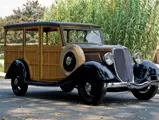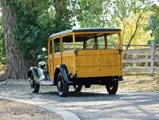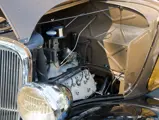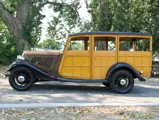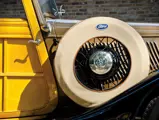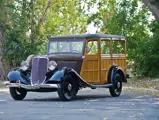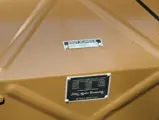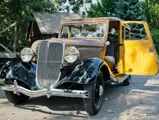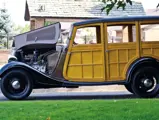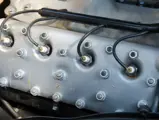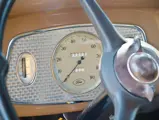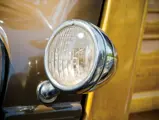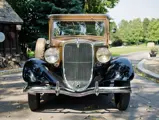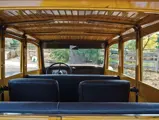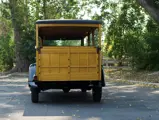Hershey 2012
1933 Ford V-8 DeLuxe Station Wagon
{{lr.item.text}}
$69,300 USD | Sold
 | Hershey, Pennsylvania
| Hershey, Pennsylvania
{{internetCurrentBid}}
{{internetTimeLeft}}

75 hp, 221 cu. in. L-head inline four-cylinder engine, three-speed sliding-gear transmission, solid front axle and ¾ floating rear axle with front and rear transverse leaf spring suspension, and four-wheel mechanical brakes. Wheelbase: 112 in.
• One of approximately 21 examples known to exist
• Correctly restored to Early Ford V-8 Club Dearborn Award judging standards
• Wood and upholstery were restored by the shop of renowned woodie expert Nick Alexander
After the opening of Henry Ford’s Iron Mountain sawmills in the Menominee River Valley in 1922, under the Michigan Land, Lumber, and Iron Company, the facilities turned out just raw lumber, followed by the production of components that were shipped to Briggs and Murray in Detroit, and later to Raulang in Cleveland, for assembly. This changed when Ford opened his own station wagon assembly line in the fall of 1936 at Iron Mountain.
Only 1,654 of the V-8-powered DeLuxe station wagons were built for the 1933 model year, at a cost of $640. The boxy, upright styling of 1932 gave way to a more streamlined and swept-back look, with a pronounced rake in the windshield. Murray, responsible for the Ford wagon body, redesigned the model’s exterior with wider front doors and a sloping “A” pillar. The wood body sections were constructed of maple with a matching rubberized canvas top over the cab. The steel-spoke wheels were painted black from the factory, as on this example.
This car was purchased from the famous Ed Towe Museum in Dear Lodge, Montana, about 15 years ago. Despite having had a frame-off restoration, the car was not up to the current owner’s standards. He then sent it to the restoration shops of well-known Ford woodie expert Nick Alexander to have all the wood and seat upholstery restored. Everything has been correctly restored to Early Ford V-8 Club Dearborn Award judging standards, and it has traveled just eight miles since its restoration. There are only twenty-one 1933 Ford Station Wagons listed in the National Woodie Club registry, making this vehicle extremely rare and providing an excellent opportunity to purchase one of the finest early Ford station wagons.

